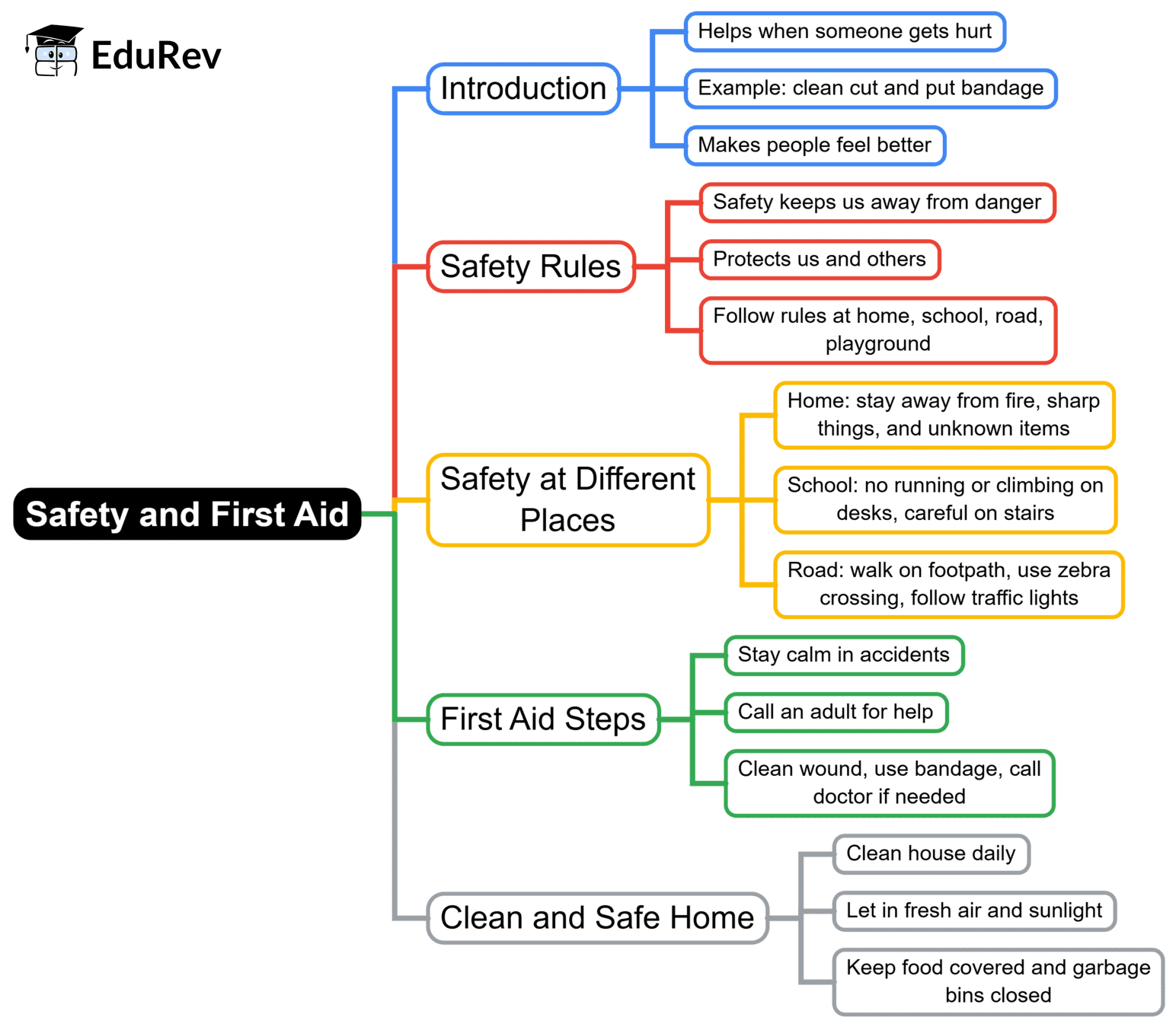Class 2 Exam > Class 2 Notes > EVS for Class 2 > Mind Map: Safety & First Aid
Mind Map: Safety & First Aid | EVS for Class 2 PDF Download

The document Mind Map: Safety & First Aid | EVS for Class 2 is a part of the Class 2 Course EVS for Class 2.
All you need of Class 2 at this link: Class 2
|
29 videos|304 docs|48 tests
|
FAQs on Mind Map: Safety & First Aid - EVS for Class 2
| 1. What are the basic principles of first aid that everyone should know? |  |
Ans. The basic principles of first aid include assessing the situation for safety, calling for professional help when necessary, and providing immediate care to the injured or ill person. Key components involve checking for responsiveness, airway, breathing, and circulation (the ABCs of first aid). It's also important to control bleeding, treat for shock, and provide comfort until professional medical assistance arrives.
| 2. How can I effectively manage a choking emergency? |  |
Ans. In a choking emergency, it's crucial to act quickly. For adults and children over one year old, perform the Heimlich maneuver by standing behind the person, placing your arms around their waist, and making a fist with one hand. Place the thumb side against the middle of their abdomen, above the navel, and grasp it with the other hand. Perform quick, upward thrusts until the object is expelled or the person can breathe. For infants, use back blows and chest thrusts instead.
| 3. What should I do if someone is bleeding heavily? |  |
Ans. If someone is bleeding heavily, the first step is to call for emergency medical services. Next, apply direct pressure to the wound using a clean cloth or bandage. If the blood soaks through, do not remove the original cloth; instead, add more layers and continue applying pressure. Elevate the injured area above the heart if possible, and monitor the person for signs of shock, such as weakness or confusion.
| 4. What is the importance of CPR, and when should it be performed? |  |
Ans. Cardiopulmonary resuscitation (CPR) is vital in emergencies when someone is unresponsive and not breathing. It helps maintain blood flow to the brain and vital organs until professional help arrives. CPR should be performed immediately in cases of cardiac arrest, drowning, or any situation where breathing has stopped. It's important to use the correct technique: chest compressions followed by rescue breaths if trained to do so.
| 5. What essential items should be included in a first aid kit? |  |
Ans. A well-equipped first aid kit should contain items such as adhesive bandages, sterile gauze pads, adhesive tape, antiseptic wipes, scissors, tweezers, disposable gloves, and a CPR face shield. It should also include a first aid manual, pain relievers, and any personal medications needed. Regularly check the kit to replace expired items and ensure it is stocked for emergencies.
Related Searches















